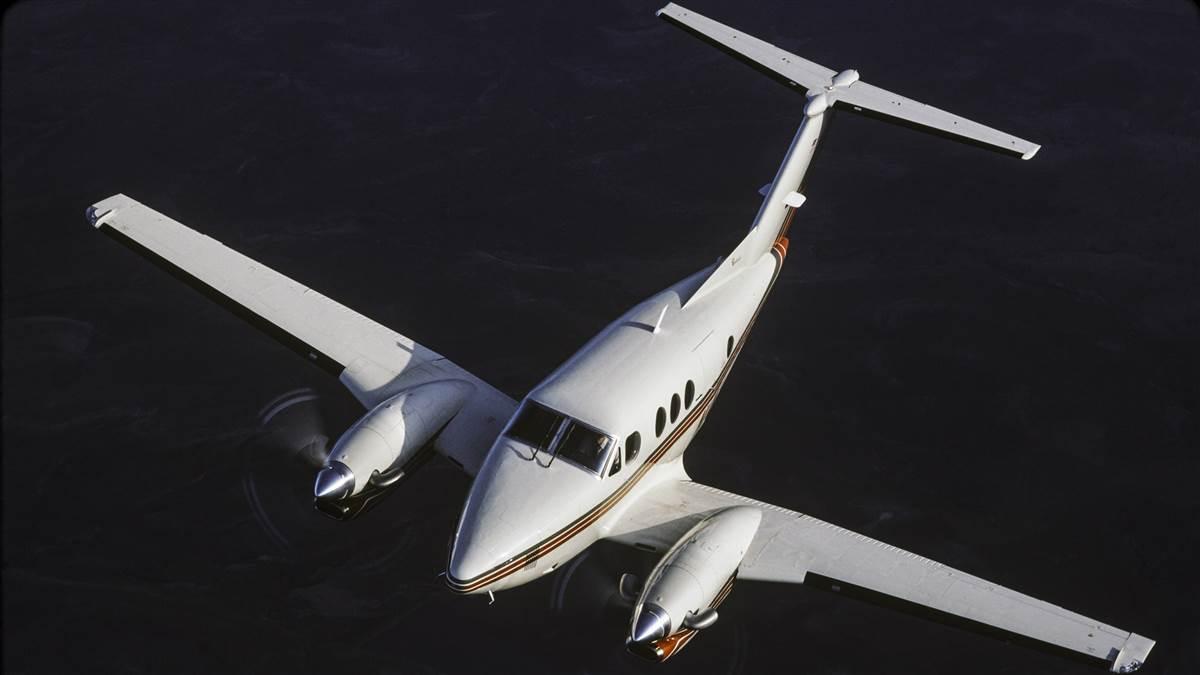Quick Look: Beechcraft King Air F90
The hybrid hot rod of King Airs

Only 235 F90s were made from model years 1979 through 1985. The last two production-year models featured more horsepower and redesigned cowlings, and are designated F90-1. The Pratt & Whitney PT5A-135s in the F90 are thermodynamically rated to 850 shaft horsepower, and the -135A used in the F90-1 are 885 shaft horsepower. Both are flat rated to 750 shaft horsepower for takeoff and climb; however, the F90-1’s engines can hold that power to a higher altitude for added speed. Blackhawk Modifications of Waco, Texas, can convert older F90s to the -1 specifications with its XP135A upgrade.
Stock F90s can cruise around 260 KTAS, while the -1 can hit 270. Fuel capacity is a substantial 3,149 pounds. With fuel burns in the 500 to 650 pounds-per-hour range (75 to 100 gph), depending on power setting, the F90 pilot has lots of flexibility to go fast or go far. Useful load is around 3,750 pounds, and full-fuel payload is around 600 pounds. As an example of the fuel/payload tradeoff, you can load 2,500 pounds of fuel, six passengers, and their bags, and fly three hours at high-speed cruise.
F90s can maintain a sea-level cabin to 11,000 feet, tapering off to a 10,000-foot cabin at 26,500 feet. And it’s a good thing the pressurization works well; the F90 is such a good climber that climbs to altitude make sense even for short hops. Most F90 interiors are set up with a four-place club arrangement atop the wing and two seats in the aft, one of which is a sideways belted potty seat. All baggage is stored in the aft cabin as nacelle lockers are not available for the F90/-1.
Avionics when these airplanes exited the factory were dual Collins Pro Line, but expect vastly different avionics installs in the fleet during the intervening 30 years. Everything from original analog gauges to Garmin’s G600 glass panel can be found.
Maintainability is a King Air hallmark. The basic airframe has been around since 1964, and it uses the uber-popular Pratt & Whitney PT6. The systems are robust, proven, and easily maintained at nearly any shop in the world. You would be hard-pressed to find a mechanic who hasn’t worked on a King Air.
Competitors include the Mitsubishi MU–2, Piper Cheyenne, and Cessna Conquest. Pilots stepping up from a piston twin will find the King Air an easy transition.
F90s came from the factory with standard landing gear and optional “high-flotation” gear (larger wheels and tires for rough-field operations). Aside from the aforementioned Blackhawk engine modifications, Raisbeck offers aft body strakes for improved handling/yaw damping, high-flotation gear doors that fully enclose the main landing gear of F90s equipped with the optional high-flotation gear, and a Power Props four-blade propeller mod. American Aviation Inc. offers ram-air recovery cowlings and Speed Stacks exhaust pipes. Speed Stacks provide a modest increase in speed and help direct exhaust soot away from the airframe, reducing cleaning labor.
Vref values a 1979 F90 at $620,000, ranging up to $970,000 for a 1985 F90-1.

